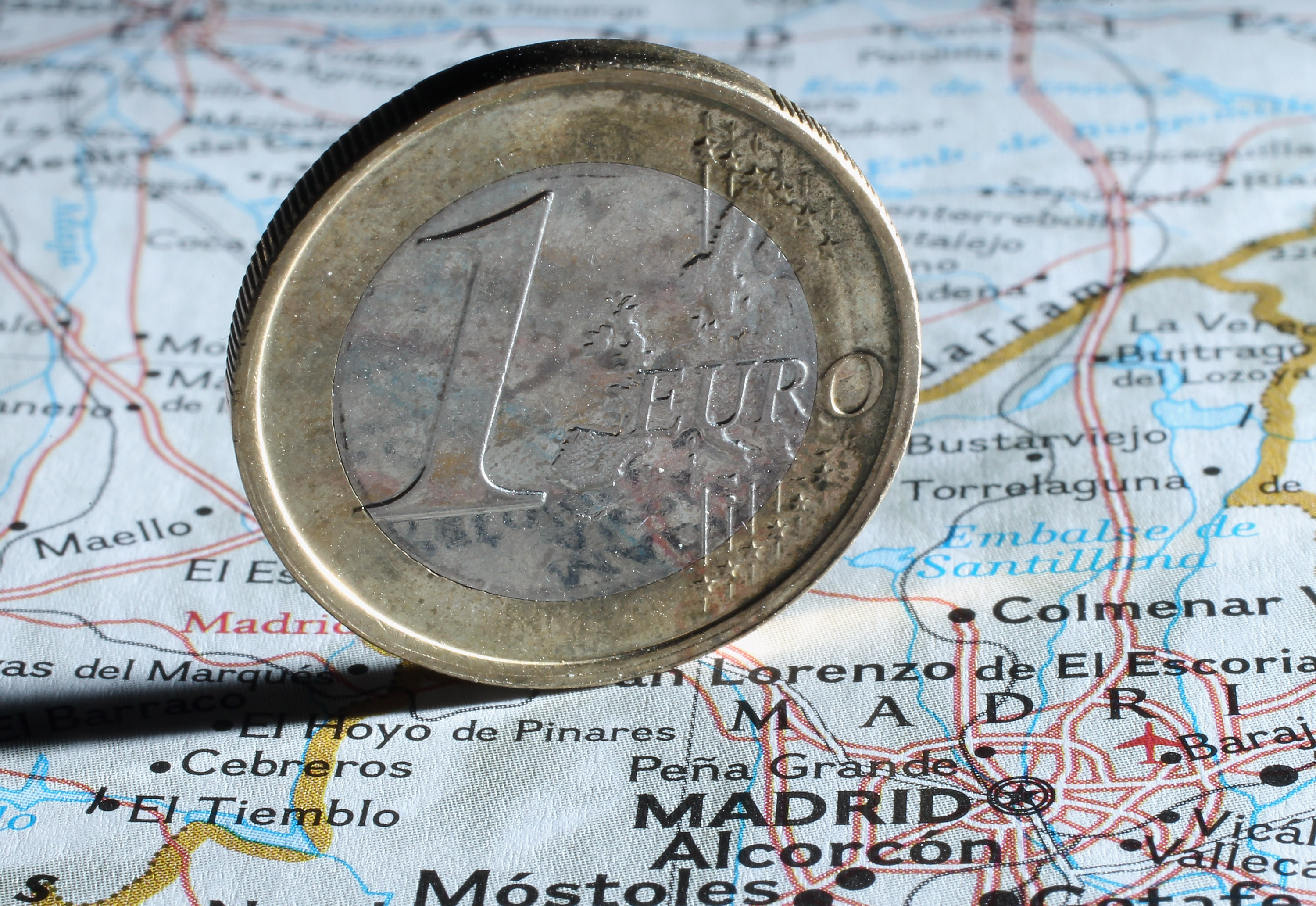Europe is sliding into debt deflation
Sean Gallup/Getty Images

In 2011 and 2012, many thought the Euro might break up due to the sovereign debt crisis. Unlike countries that have their own currency, countries in the Eurozone are dependent on the monetary policy of the European Central Bank (ECB). This disconnect makes Euro countries much more vulnerable than other countries to solvency crises. Since, then, however the new chief of the ECB, Mario Draghi, has engaged in a bond-buying program of Outright Monetary Transactions (OMTs) which has helped struggling periphery countries (Spain, Greece, Portugal, Italy, etc) stay solvent.
But while this has lowered interest rates in the struggling countries — and done enough to keep the Euro together — it has not been enough to get Europe out of the woods. Unemployment still remains cataclysmically high in Greece, Spain, Portugal, Italy, and high throughout the Eurozone. And now with inflation rapidly falling, many are worried that Europe is falling into debt deflation. Of course, Europe as a whole is not in deflation yet.
But as Paul Krugman argues, the process is already under way:
The Week
Escape your echo chamber. Get the facts behind the news, plus analysis from multiple perspectives.

Sign up for The Week's Free Newsletters
From our morning news briefing to a weekly Good News Newsletter, get the best of The Week delivered directly to your inbox.
From our morning news briefing to a weekly Good News Newsletter, get the best of The Week delivered directly to your inbox.
I'd say that to have debt deflation — in which falling prices due to a weak economy increase the real burden of debt, which depresses the economy further, and so on — you don't need to have literal deflation. The process begins as soon as you have lower inflation than expected when interest rates were set. It's also noteworthy that inflation rates in the highly indebted countries are all well below the eurozone average, with actual deflation in Greece and near-deflation in the rest. So the debt deflation spiral is in fact well underway. [The New York Times]
Europe's approach throughout the crisis has been to do the very minimum necessary to keep the Euro system afloat. It remains to be seen if that is an approach compatible with an economic recovery anytime soon.
A free daily email with the biggest news stories of the day – and the best features from TheWeek.com
John Aziz is the economics and business correspondent at TheWeek.com. He is also an associate editor at Pieria.co.uk. Previously his work has appeared on Business Insider, Zero Hedge, and Noahpinion.
-
 Will Trump’s $12 billion bailout solve the farm crisis?
Will Trump’s $12 billion bailout solve the farm crisis?Today’s Big Question Agriculture sector says it wants trade, not aid
-
 ‘City leaders must recognize its residents as part of its lifeblood’
‘City leaders must recognize its residents as part of its lifeblood’Instant Opinion Opinion, comment and editorials of the day
-
 10 upcoming albums to stream during the winter chill
10 upcoming albums to stream during the winter chillThe Week Recommends As the calendar turns to 2026, check out some new music from your favorite artists
-
 US mints final penny after 232-year run
US mints final penny after 232-year runSpeed Read Production of the one-cent coin has ended
-
 Warner Bros. explores sale amid Paramount bids
Warner Bros. explores sale amid Paramount bidsSpeed Read The media giant, home to HBO and DC Studios, has received interest from multiple buying parties
-
 Gold tops $4K per ounce, signaling financial unease
Gold tops $4K per ounce, signaling financial uneaseSpeed Read Investors are worried about President Donald Trump’s trade war
-
 Electronic Arts to go private in record $55B deal
Electronic Arts to go private in record $55B dealspeed read The video game giant is behind ‘The Sims’ and ‘Madden NFL’
-
 New York court tosses Trump's $500M fraud fine
New York court tosses Trump's $500M fraud fineSpeed Read A divided appeals court threw out a hefty penalty against President Trump for fraudulently inflating his wealth
-
 Trump said to seek government stake in Intel
Trump said to seek government stake in IntelSpeed Read The president and Intel CEO Lip-Bu Tan reportedly discussed the proposal at a recent meeting
-
 US to take 15% cut of AI chip sales to China
US to take 15% cut of AI chip sales to ChinaSpeed Read Nvidia and AMD will pay the Trump administration 15% of their revenue from selling artificial intelligence chips to China
-
 NFL gets ESPN stake in deal with Disney
NFL gets ESPN stake in deal with DisneySpeed Read The deal gives the NFL a 10% stake in Disney's ESPN sports empire and gives ESPN ownership of NFL Network